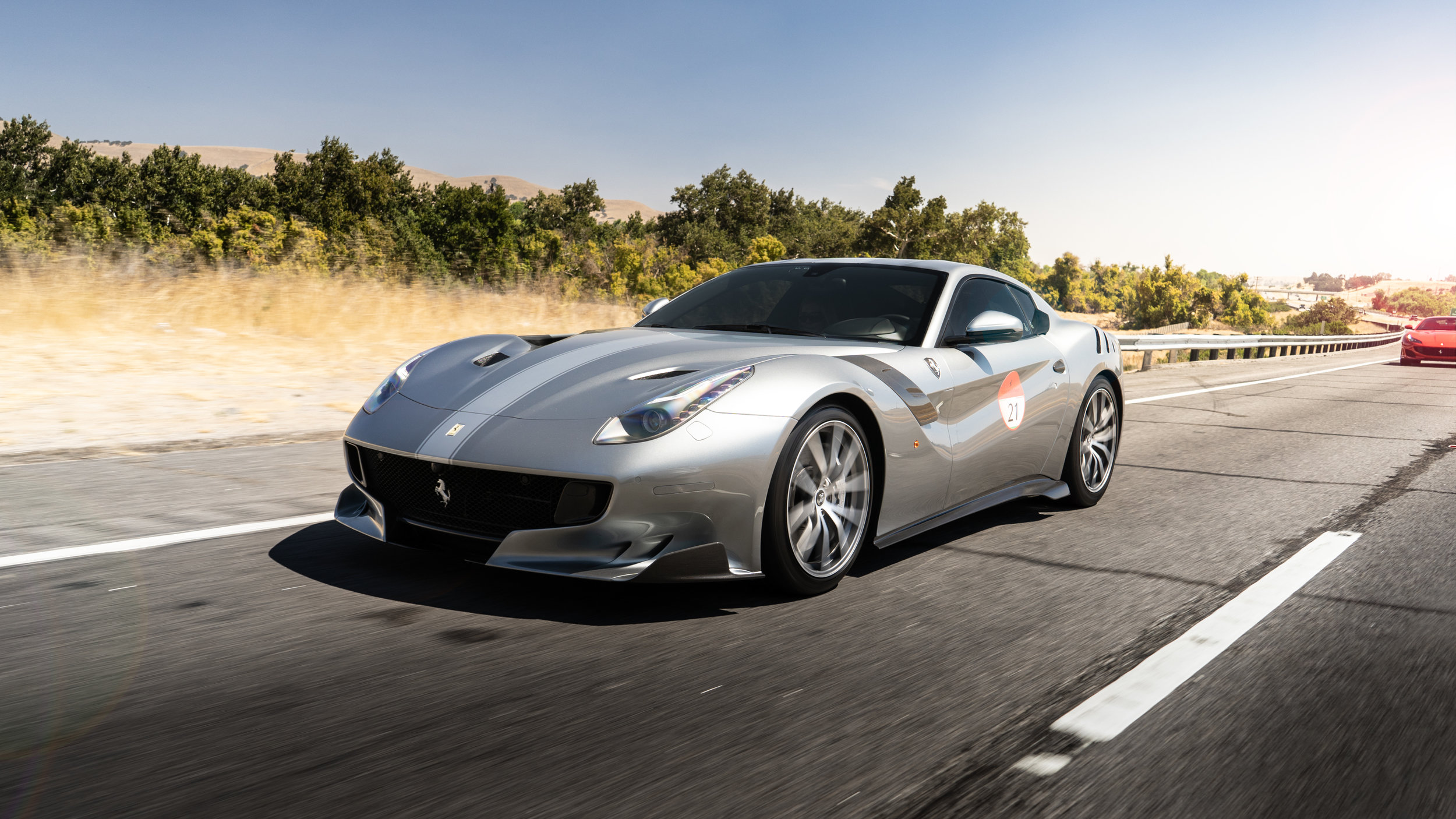Ferrari & The Tour de France

The Ferrari F12 TDF was released with Ferrari's most powerful naturally aspirated V12 engine (not to mention an aero kit that increases down force by 87%). Just like the naming of the 599 GTO Ferrari needed to dig deep into its heritage to find a suitable name for their new Grand Tourer. Ferrari went with TDF as a homage to the epic 250 GT LWB Berlinetta, their most coveted and successful Racecar in the GT class of the late 50s and would go on to be the center influence of design for the 250 GT SWB Berlinetta and 250 GTO with its 3.0 Liter Colombo V12 engine and incredible allow coachwork designed by Pinin Farina and hand build by Scaglietti these cars were not only incredible to drive but as we all know are moving pieces of Italian Art.
The 250 GT LWB first shot at the limelight was at the 1956 Tour de France where Chassis #0557 GT raced to victory with Alfonso de Portago at the wheel. What made this win so pivotal in the future success of Ferrari was that it wasn't just a few laps around a circuit, but a race that consists of 3,600 miles, 6 circuit races, 2 hillclimbs, and a drag race over 10 days.
Founded in 1899, four years before the bike race, the Tour de France Automobile was a road race designed to test the endurance and durability of both driver and car. It covered more time and distance than the 24 Hours of Le Mans, Mille Miglia or Monte Carlo rally. Unlike later years first races were held on a mix of dirt and cobblestone roads on their way from circuit to circuit. The first race featured a field of 19 cars, 4 Voiturettes and 25 motorcycles and although the tour grabbed the attention of many financial problems and a number of fatalities in the early 1900s from road races put the races future in jeopardy. With enough support from enthusiasts the event continued from 1912-14 before going on a hiatus due to WWI and being reestablished in 1922 where it fielded motorcycles and cars alike even bringing in light airplanes in 1931. It wasn't until after WWII where large manufactures had begun to establish themselves and began to enter the race.
For Ferrari to not only win one Tour de France but go on to win 2 more consecutive races the following years meant they solidified their place in motorsport history and go on to win 234 races out of 963 starts.





